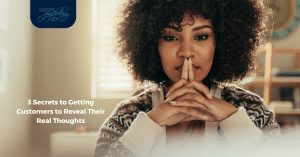Let’s take a look at what you need when planning mystery shopping.
Mystery Shopping Tools
Nowadays using audio-visual aids are very handy, for example eye tracking and cell phone technology (video facility) to get a sense of the shopping experience. Generally the staff of the environment under review, will not be aware (or notified) of the intended mystery shopping. This is to ensure that a fairly realistic experience can be recorded. Keep in mind that discretion is required when footage is used for presentation to clients and care has to be taken not to breach trust. Generally the footage is used for analysis, but when experience is the focus, it is often easier to illustrate emotions, expressions etc visually. Ensure to contract with clients that the research will not be used in a punitive way, rather as an opportunity for improvement.
The briefing document is a critical element for shoppers. This document describes the task the shopper has to perform, how they should go about the task (where a certain process is required for consistency), and what the objective is. Specifics have to be included such as timing, dress code, documenting and reporting of the experience. Other important elements to consider could include pictures of a context or scenario and a visual journey or storyboard for your shoppers. This will enable them to all follow a similar pattern, ensuring integrity when you analyze the content of multiple shopping experiences. The aim is to equip the shoppers with a framework and a credible story to “act” authentically for the best results. It may even be necessary to do role plays in the briefing sessions to ensure shoppers are all confident about how to execute their task.
Depending on the client and the context, a mystery shopper may be required to make an actual purchase of products within a given budget. In this way, it will be a closer reflection on the purchase decisions.
We also use neuroscience. Biometrics, for example, eye-tracking, galvanic skin responses or heart rate track shoppers’ focus as they navigate in a store environment. The biometric measures provide the clues around subconscious and unfiltered responses of the shoppers. For example, if something attracts the attention of the shopper, their bodies respond. Their blood pressure may raise slightly, their pupils dilate and microscopic “sweat” drops are secreted on the skin – all indicators of the body’s response. This “excitement” is mostly a subconscious reaction which the biometric tracking picks up. Neuroscience has added a different dimension to cutting through all the layers of rationalising we normally use to make purchasing decisions… and therefore getting much closer to the truth of how we feel.
Some researchers use eye tracking as a very useful tool, or you can simply use the unobtrusive video technology on a cell phone or audio recordings to capture the conversation and the tone. More structured work can be captured to a tablet prior and post shopping experience.
For analysis, a typical qualitative research approach will be followed, in other words, common themes will be identified throughout the shoppers’ journey. Customer experience metrics will be very useful to get a sense of the actual shopping experience from the shopper’s perspective. Some aspects may be obvious to the researchers, but the shopper may interpret the elements differently, hence building in CX metrics as benchmarks will guide the analysis and insight process.
The intention of recording an “as-is” experience could include reviewing the customer journey, the customer experience, identifying in-store experience gaps and opportunities at various touch points and journey moments or to redesign journeys for desired experience.
Mystery Shopping: Customer Experience
Ultimately mystery shopping helps clients to improve their customers’ experience by seeing the journey through the eyes of the customer, getting a sense of what customers feel like in the moment, how easy or difficult it is to make decisions or solve their problems, and how intent they are on buying.
Read More: Mystery Shoppers vs “Real” Shoppers






